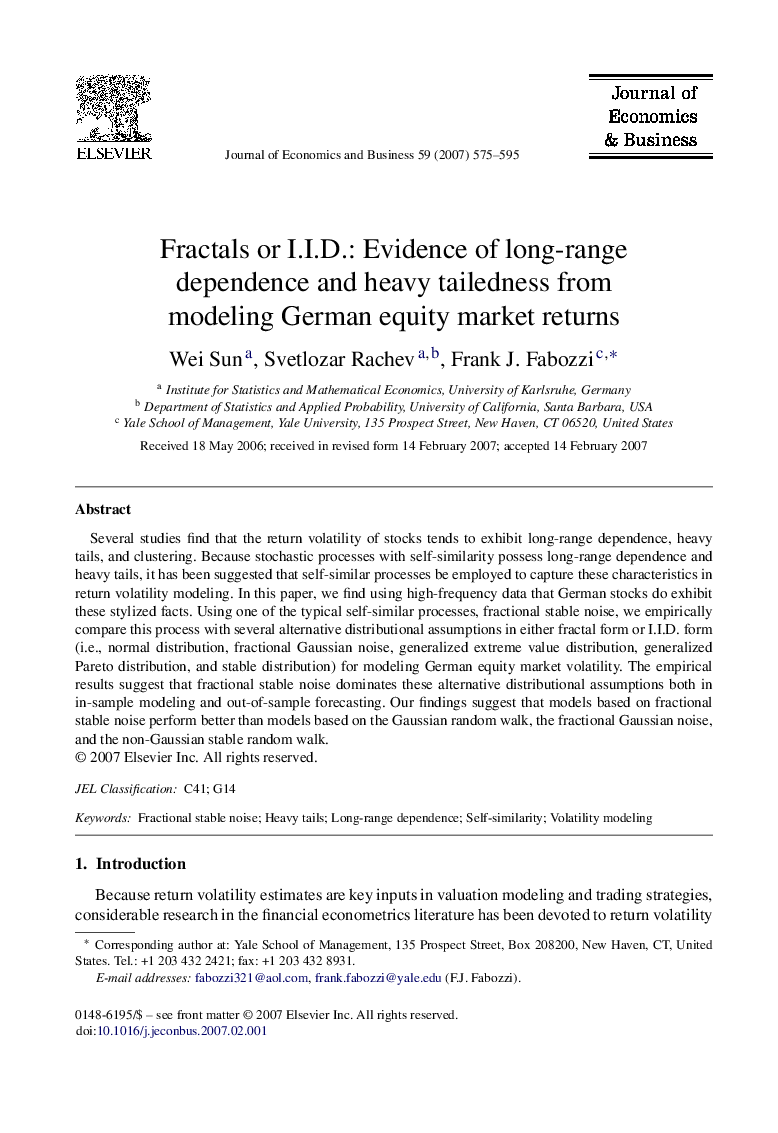| Article ID | Journal | Published Year | Pages | File Type |
|---|---|---|---|---|
| 958245 | Journal of Economics and Business | 2007 | 21 Pages |
Several studies find that the return volatility of stocks tends to exhibit long-range dependence, heavy tails, and clustering. Because stochastic processes with self-similarity possess long-range dependence and heavy tails, it has been suggested that self-similar processes be employed to capture these characteristics in return volatility modeling. In this paper, we find using high-frequency data that German stocks do exhibit these stylized facts. Using one of the typical self-similar processes, fractional stable noise, we empirically compare this process with several alternative distributional assumptions in either fractal form or I.I.D. form (i.e., normal distribution, fractional Gaussian noise, generalized extreme value distribution, generalized Pareto distribution, and stable distribution) for modeling German equity market volatility. The empirical results suggest that fractional stable noise dominates these alternative distributional assumptions both in in-sample modeling and out-of-sample forecasting. Our findings suggest that models based on fractional stable noise perform better than models based on the Gaussian random walk, the fractional Gaussian noise, and the non-Gaussian stable random walk.
